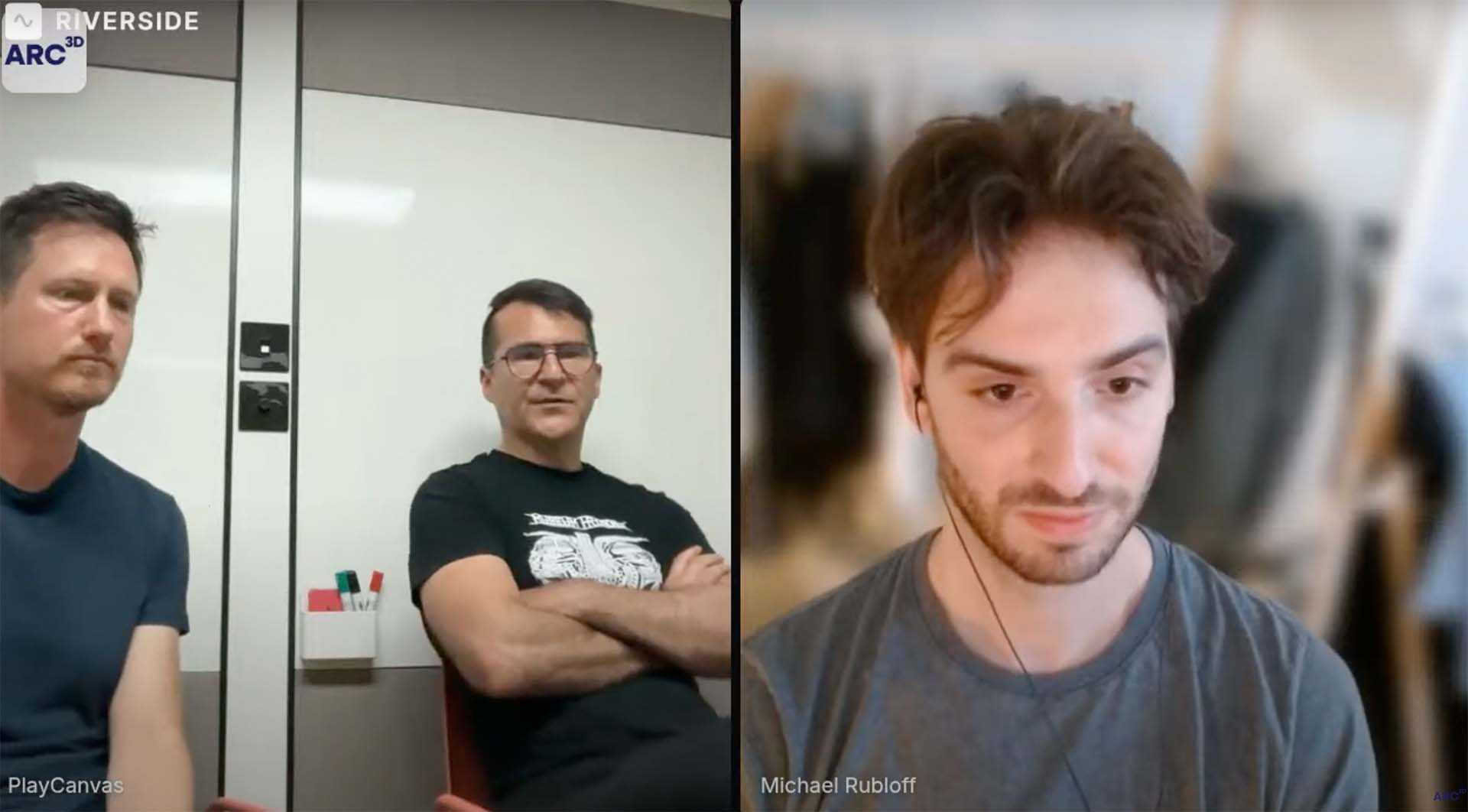
From Research Paper to Reality: How PlayCanvas Is Turning Gaussian Splatting into Everyday Web Magic
By Michael Rubloff
When the 2023 INRIA paper introduced Gaussian Splatting, it changed everything. The PlayCanvas team got that memo loud and clear. Within just a handful of months, they had a working renderer, an in-browser editor, and a plan to make splats a first-class citizen of the modern web.
Last week I sat down with Will Eastcott (Founder) and Donovan Hutchins (Senior Engineer) to learn how they did it and where the technology is headed.
Two pioneers from the PlayCanvas team reveal why “splats” are reshaping e-commerce, real-estate tours and even AR glasses. PlayCanvas began life as a Unity-style online editor. Fifteen years later it is an open-source engine, a React library, a set of web components, and a cloud publishing service. That modular architecture let the team drop Gaussian splatting into place almost overnight.
Below is the story shaped into a narrative you can skim, share, and start acting on today.
The Big Idea
Gaussian Splatting lets you capture the real world with an ordinary camera, then display it online as a vivid 3D scene that streams almost instantly. PlayCanvas built the tools that make this possible for anyone, straight in the browser.
What You’ll Love
SuperSplat Editor: your 3D cleanup crew
- Delete stray points with a ring or center brush, trim file size in minutes and export a polished model without installing desktop software.
- One-click render turns any fly-through into a 4K video, perfect for social posts or investor decks.
Share with a Link
Publish to superspl.at and get a short URL that loads on phones, tablets and VR headsets. The site even auto-tags your scene, so a quick search for “bicycle” or “cathedral” finds every public upload.
Mobile Performance That Surprises
- Compression tricks like Self-Organizing Gaussians cut file sizes by three and let four-million-point scenes run smoothly on an iPhone.
- Work has begun on streaming and LOD, meaning one file will soon adapt itself automatically from a low-power phone to a desktop RTX card.
Real-World Wins
- Retail: a golf-club brand scanned its entire lineup and saw shoppers spend more time on product pages.
- Real Estate: developers mix drone terrain with high-res apartment splats, letting buyers walk the grounds before construction even starts.
- Cultural Heritage: long-exposure “light paintings” and 360° church scans capture moments that traditional photogrammetry never touched.
Built for the Modern Web
- Drop-in React components make it as easy as adding a YouTube embed.
- Lens Studio already accepts splats, and the upcoming Spectacles browser update will bring WebXR splats to Snap’s AR glasses.
Why It Matters
Early 3D workflows demanded expensive scanners or weeks of artist time. PlayCanvas shows you can scan an object in an afternoon, tidy it during your lunch break, and share an interactive version before dinner. The result lowers the barrier for small studios and solo creators, unlocking fresh use cases every week.
Try It Yourself
- Capture – film a short video of any object or space.
- Convert – run an open-source pipeline such as Gaussian Surface Reconstruction to generate a .ply file.
- Edit – load the file into SuperSplat Editor, clean the floaters, and add spatial annotations.
- Publish – click “Share,” copy the link, and watch reactions roll in.
Want to experiment?
Browse the public gallery at superspl.at for inspiration, then upload your own creation. The PlayCanvas team welcomes pull requests, so your feature idea might be in a future release.